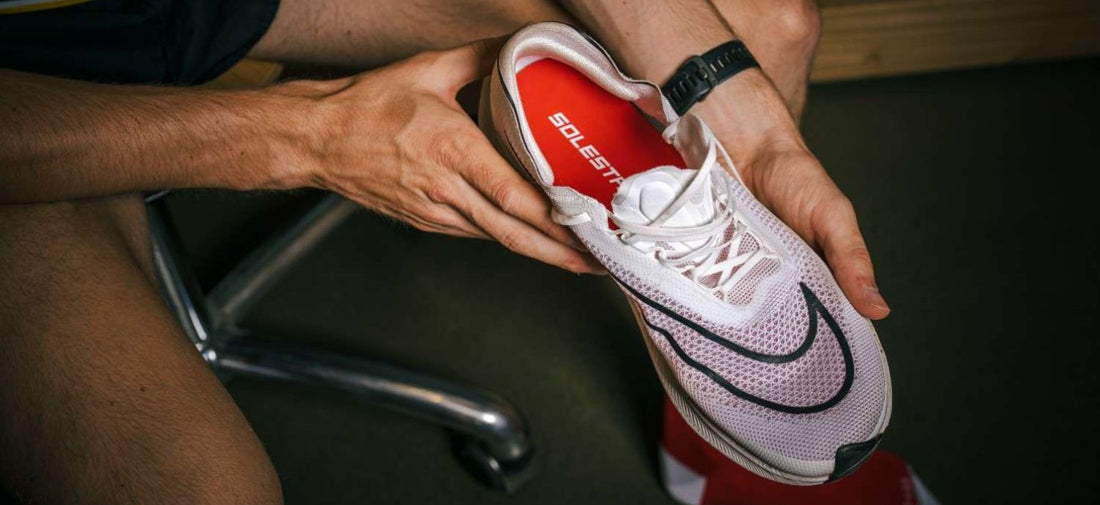
Best Insoles for Flat Feet Running: Guide for Runners
Running with flat feet doesn't have to mean constant pain or sidelining injuries. If you're dealing with low arches, finding the right insoles can transform your runs, providing the support needed for comfort and performance. In this guide, we'll break down the challenges, benefits, key features, top picks for 2025, and expert tips to help you choose the best running insoles for flat feet. Whether you're a beginner or seasoned marathoner, these insights will get you back on track, pain-free.
Challenges of Running with Flat Feet
Flat feet, or fallen arches, can turn your favorite activity into a struggle. Without proper arch support, your feet roll inward excessively, a condition called overpronation, which twists the foot and puts uneven stress on joints and tissues. This misalignment often leads to sharp pain during runs, but the issues don't stop there: post-run soreness in the arches, heels, or even knees and hips is common as the strain radiates upward.
Runners with flat feet also face higher risks of fatigue and balance problems, making longer distances feel exhausting. Tight calves or tendons can worsen heel pain, while the constant impact on toes increases the chance of blisters or stress fractures. Overall, these challenges not only sap your energy but can lead to chronic issues if ignored, forcing many to cut runs short or skip training altogether.
How Insoles Can Help with Flat Feet
Insoles are game-changers for flat-footed runners, acting like a built-in coach for your feet. By providing targeted arch support, they counteract overpronation, stabilizing your ankles and balancing weight distribution to reduce strain on joints. This means less pain in the arches, heels, and lower legs, allowing you to run longer without the dreaded fatigue.
Beyond relief, quality insoles boost shock absorption and heel cushioning, softening impacts and improving your gait's flexibility for smoother strides. They enhance balance and propulsion, helping you maintain form even on uneven trails. For many, switching to supportive insoles cuts injury risk and keeps flat feet energized, turning runs into enjoyable escapes rather than endurance tests.

Key Features of the Best Insoles for Flat Feet Running
Not all insoles are created equal—especially for flat feet. Look for these essential features to ensure your running insoles deliver lasting support and comfort:
- Firm Arch Support: A contoured, low-profile arch that cradles without collapsing, preventing overpronation and promoting proper alignment.
- Shock Absorption and Cushioning: Deep heel cups and gel or foam layers to dampen impacts, reducing heel pain and fatigue during high-mileage runs.
- Breathable Materials: Moisture-wicking fabrics like EVA or carbon fiber blends for odor control and temperature regulation on long runs.
- Customizable Fit: Trim-to-size options or adjustable volumes to match your shoe type, ensuring stability without bulk.
- Durability and Flexibility: Rigid bases for structure paired with slight flex for natural movement, ideal for varied terrains.
These elements work together to distribute weight evenly, absorb shocks, and propel you forward, key for flat-footed runners aiming for injury-free miles.

Top Running Insoles for Flat Feet in 2025
Top pick: SOLESTAR Neutral Run Insole.
Patented stabilizing core and shell cradle flat feet in a neutral position, countering overpronation to relieve heel, knee, arch, and back pain while reducing joint/muscle stress for injury-free runs.
Cushioning PU foam with breathable polyester cover delivers remarkable comfort and smoother strides, boosting power transfer for enhanced performance on long distances. Lightweight (85g/pair, size 42) and slim (3mm forefoot) for seamless shoe integration.
- Best for: High-mileage runners seeking pain-free propulsion.
- Runners rave: Eliminates discomfort on 130km weekly runs, improving statics and endurance.
- Pro tip: Check sizing; 6-week guarantee.

Tips for Choosing the Right Insoles for Your Feet
Selecting the best insoles for flat feet running boils down to matching support to your needs. Here's how to nail it:
- Assess Your Arch Type: Wet your foot and step on paper—if there's little to no curve, confirm low arches and opt for firm, low-profile support.
- Prioritize Firmness Over Softness: Skip floppy gels; choose rigid arches that hold up under impact to avoid worsening overpronation.
- Consider Custom vs. OTC: Over-the-counter works for most, but if pain persists, consult a podiatrist for molded orthotics tailored to your gait.
- Test for Fit and Volume: Ensure they fill your shoe without crowding—trim if needed, and walk/run in-store to check stability.
- Look for Durable Materials: Go for breathable, antimicrobial options like memory foam or cork that last 6–12 months of heavy use.

